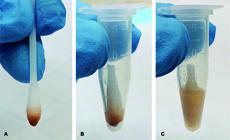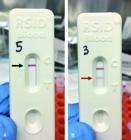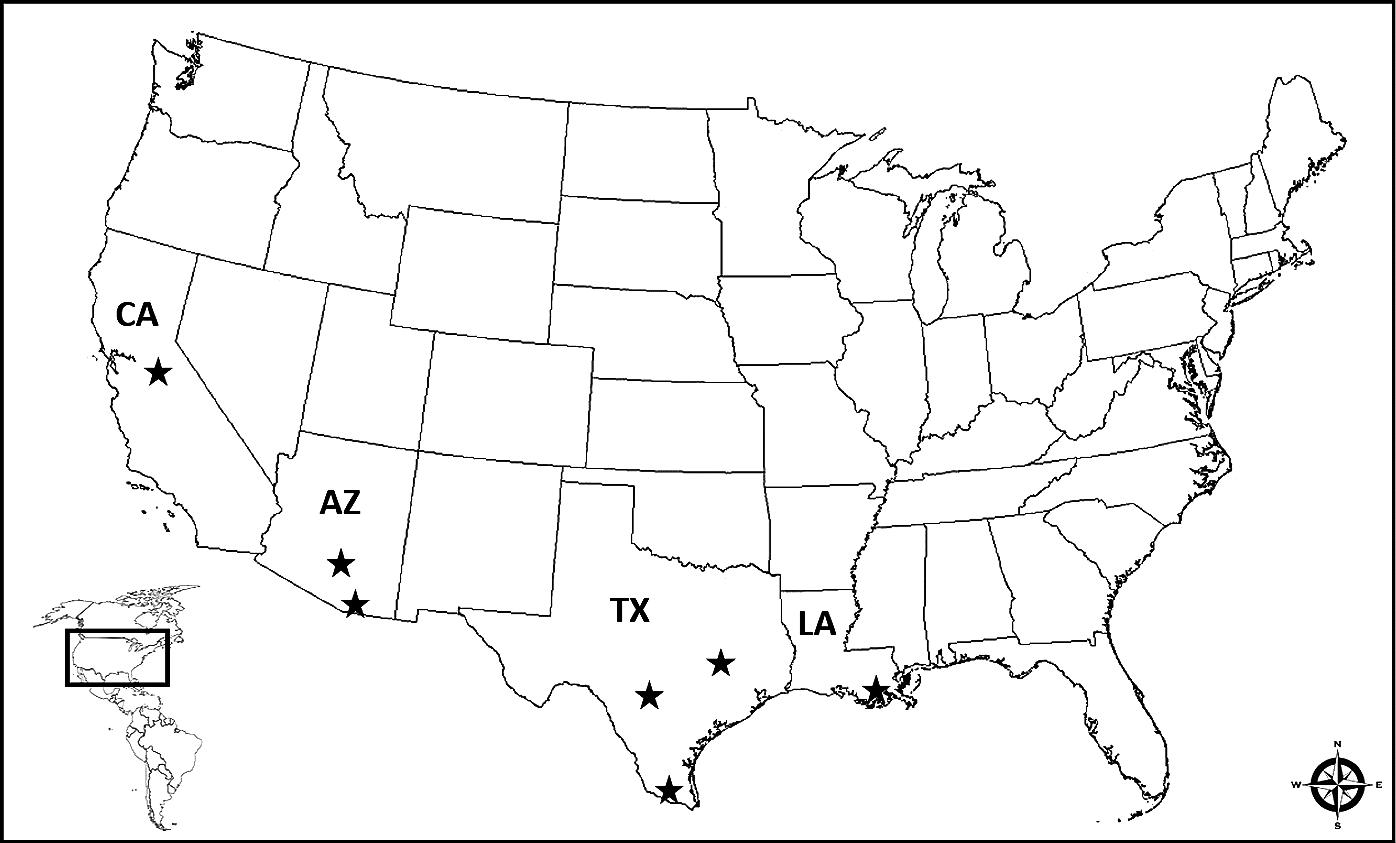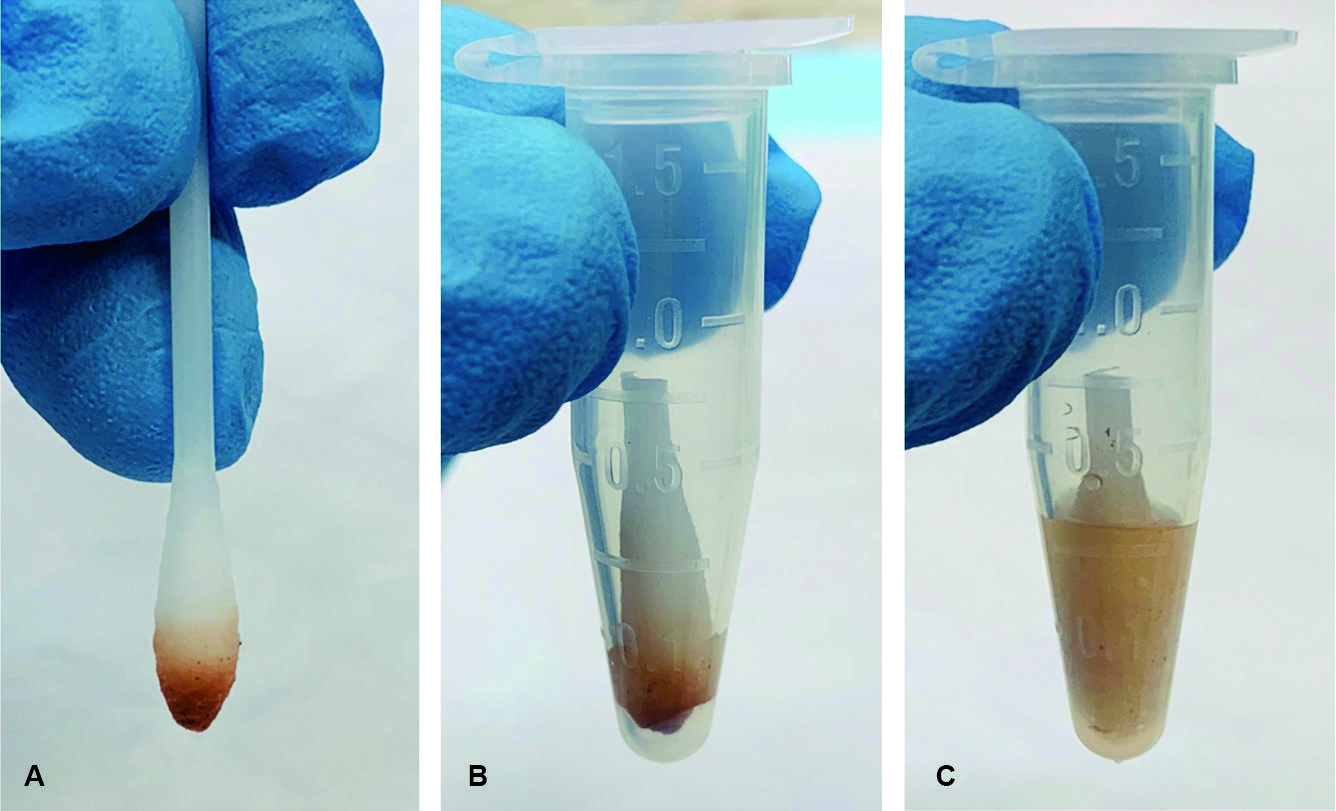BACKGROUND DNA- and proteomics-based techniques are currently used to identify a triatomine human blood meal. These methods are time consuming, require access to laboratories with sophisticated equipment, and trained personnel.
OBJECTIVES
We tested a rapid and specific immunochromatographic assay (that detects human blood in forensic samples) to determine if human blood was present in triatomines and their fecal excreta.
METHODS
We fed Triatoma rubida human blood (positive control) or mouse blood (negative control) and performed the assay on the abdominal contents and fecal excreta. Triatomine field specimens collected in and around human habitations and excreta were also tested.
FINDINGS
The assay was positive in triatomines fed human blood (N = 5/5) and fecal excreta from bugs known to have ingested human blood (N = 5/5). Bugs feeding on mice (N = 15/15) and their fecal excreta (N = 8/8) were negative for human blood. Human blood was detected in 47% (N = 23/49) triatomines, representing six different species, collected in the field.
MAIN CONCLUSIONS
The pilot study shows that this rapid and specific test may have applications in triatomine research. Further study is needed to determine the sensitivity of this assay compared to other well-established techniques, such as DNA- and proteomics-based methodologies and the assay’s application in the field.
Key words:
triatomine; kissing bug; human blood detection; blood sources; Chagas disease

 Thumbnail
Thumbnail
 Thumbnail
Thumbnail
 Thumbnail
Thumbnail
 Thumbnail
Thumbnail



